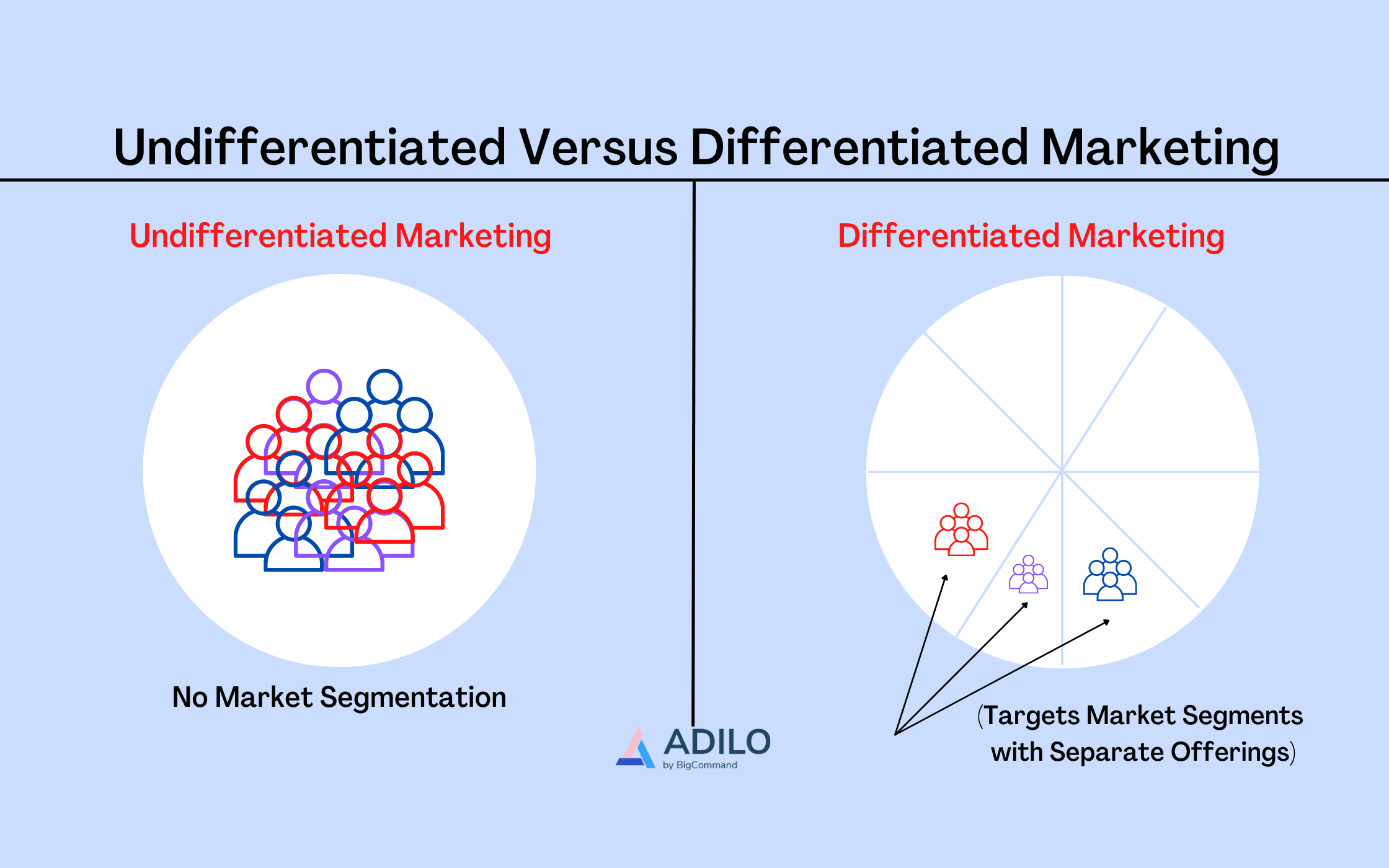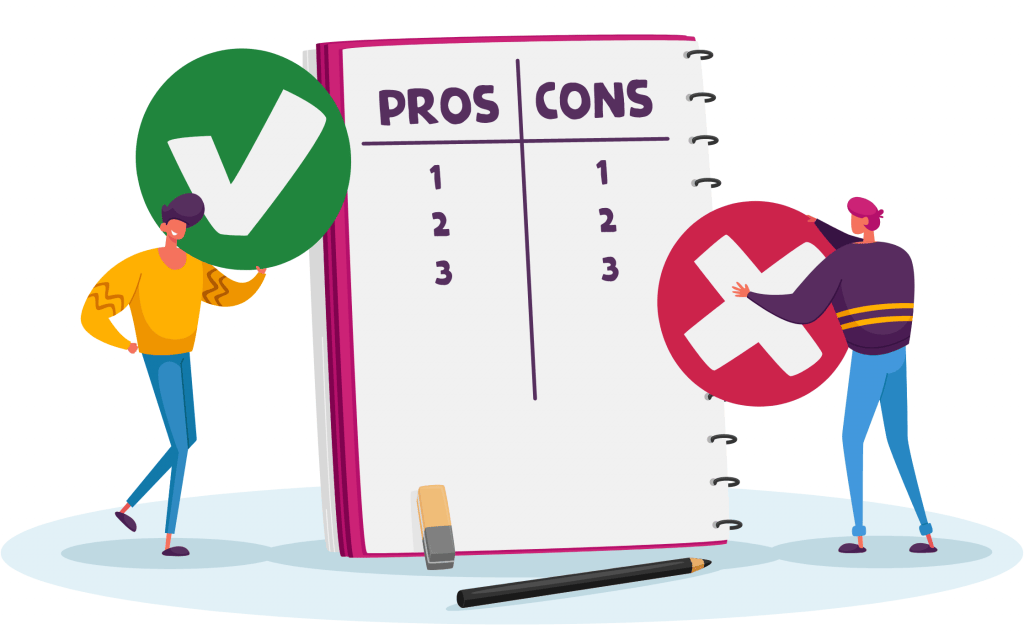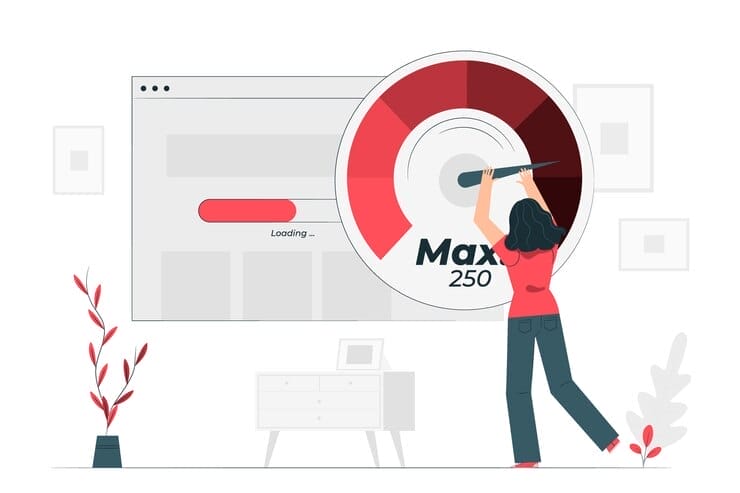Stand out in a crowded market! Learn the advantages and disadvantages of differentiated marketing and get a step-by-step guide to crafting a unique differentiation strategy that sets your brand apart and drives real results.
You May Also Like: What Market Segmentation Actually Means
Table of Contents
What is Differentiated Marketing?

Differentiated marketing is a marketing strategy whereby a single organization creates multiple marketing campaigns to appeal to different target audiences. Differentiated marketing can also be alluded to as multi-segment marketing.
Differentiated marketing targets various market segments and provides distinct benefits to each. For example, retailers of organic dog food engage the differentiated marketing strategy to reach various audiences, such as animal lovers, eco-conscious individuals, and health-conscious consumers.
Credit: Brand Master Academy | Video Hosted On Adilo – An Online Ad-Free Video Hosting Platform
Another example of businesses that engage the differentiated marketing strategy are businesses that sell dietary supplements to multiple target audience segments, ranging from individuals looking for specific nutritional supplements to those who prefer general multivitamins.
In differentiated marketing, businesses can effectively articulate their value proposition to various market segments and, ideally, increase the success of their marketing strategy. It aims to increase sales and market share across all target segments.
Concepts of Differentiated Marketing

Total Market
The total market is the whole market comprising people who have various characteristics, interests, needs, and preferences to whom an organization markets its products and services. Not everyone in the market will subscribe to an organization’s products.
Handpicked For You:
- The Snapchat Marketing Guide for Brand Growth
- Pinterest Marketing: The beginners’ guide
- Branding: The Importance of Branding & Features of a Branding Strategy
- The Concept of a Brand: Elements, Types, 10 Global Brands in 2025 & What Makes Them Successful
- Best Guide to Brand Positioning in 2025
Target Market
A target market is a subset or segment of the total market comprising people with similar characteristics to whom a company markets its products or services. While customers may emerge from the entire market, a target market consists of customers who are most likely to buy what an organization sells.
Target Marketing
Target marketing is researching and understanding the characteristics, interests, needs, and preferences of prospective customers to focus your message and marketing budget on the specific segment of the market most likely to purchase your product or service. Differentiated marketing, amongst others, is a subset of target marketing.
Marketing Mix
The marketing mix, also known as the four Ps of marketing, are the critical mix of elements for promoting a product or service. They are the product, price, placement, and promotion of an organization’s offerings. The four Ps, or the marketing mix, are constrained by internal and external factors in the overall business environment and interact heavily with one another.
The four Ps help businesses figure out what their customers want, how their products and services are regarded in the world, how their products or services meet or fail to meet those needs, how they interact with their customers, and how they differentiate themselves from their competitors.
Brand Positioning
Brand positioning is designing a company’s offerings to occupy a distinct position in its competitive environment. It entails carefully manipulating every component of the marketing mix.
Positioning Statement
A positioning statement is an honest communication of a brand’s essence. It should explain why prospective customers should always choose a brand. It is typically three to five sentences.
Differences Between Differentiated Marketing and Undifferentiated Marketing

The undifferentiated marketing strategy focuses on the entire market rather than a segment. This strategy employs a single marketing mix, one product, one price, one placement, and one promotional effort, to reach the most significant number of consumers in that market. The success of undifferentiated marketing relies heavily on the marketer’s ability to reach a large audience, which can be simplified using tools like power dialer software.
On the other hand, a differentiated marketing strategy targets specific market segments with marketing mixes tailored to their needs. Differentiated marketing works best in markets with easily identifiable components with distinct requirements. For example, a vitamin supplement manufacturer may identify gender-based market segments and create one multivitamin formula for women and another for men.
Advantages of Differentiated Marketing
Your organization enjoys the flexibility to test market segments
Differentiated marketing allows organizations to test the waters and dominate previously untapped market segments.
Your organization becomes more relevant to specific demographics
Using a differentiated marketing approach, you can cater to multiple, specific groups of consumers rather than just one.
Your organization becomes more market-relevant
By differentiated marketing, your organization can become a one-stop-shop for meeting customer needs in your niche. Your organization becomes more relevant in the marketplace.
Your organization becomes more market-relevant
By differentiated marketing, your organization can become a one-stop-shop for meeting customer needs in your niche. Your organization becomes more relevant in the marketplace.
Your organization expands in reach and revenue
You can reach more customers by differentiating your marketing approach for selling your products and services. Assume you own a coffee shop with many college students as customers. You can aim to broaden your consumer reach to commuting professionals by diversifying your offerings. This will allow you to reach a broader audience while improving business operations. As you cater to a larger audience and their respective demands, your revenue will naturally rise as your business expands.
Your organization enjoys increased market share
A company can gain a larger market share by increasing its sales volume and value of differentiated products. As a result, differentiation and market share have a positive relationship. Market share growth is therefore dependent on a company gaining a competitive advantage.

Disadvantages of Differentiated Marketing
Here are some of the disadvantages of differentiated marketing you need to know about.
Your organization’s research and development costs will rise
The time, talent, and money required to identify the unique needs of specific target markets are greater than those required for undifferentiated marketing.
Your organization’s marketing and management costs will rise
Differentiated marketing necessitates businesses to allocate a more significant portion of their budget to developing various marketing campaigns to reach diverse segments. It also implies that there will be added costs for effective administration and management.
Your organization may experience inconsistencies across segments
Inconsistencies in results can occur for various reasons. Customers, for example, may value and require different offerings at different rates and times, causing the results and revenue generated across segments to differ.
Inability to generate insights
Variable customer responses may make it difficult to create specific customer insights.
When to Use a Differentiated Marketing Strategy

When should you consider employing a differentiated marketing strategy? Here are some scenarios where it could be a viable option:
- When you have outgrown your current niche.
- When you are losing your competitive advantage in an undifferentiated market.
- When your profit margins are thinning. Research shows that differentiated services typically have higher profit margins than undifferentiated services.
- When you want to maximize the value of your organization, a differentiated strategy enables you to acquire and maximize valuable niches by tailoring your marketing strategy to the wants and needs of individual segments.
How to Create a Differentiated Marketing Strategy
Follow these steps to create a differentiated marketing strategy:
Step 1: Define your target market

You must first determine your customer’s primary characteristics, such as their location, gender, age, income, and marital status. When researching, focus on your best and most desirable customers within each segment. It will also help you understand how your customers look for new providers and where they get their information.
Step 2: Understand your customers’ needs

You must determine which products and services your customers prefer. A survey or feedback form can help gather this information. You can also use data analytics to track your customers’ purchasing habits and target them accordingly.
Step 3: Position your brand

Brand positioning begins with identifying your differentiating factors, which must be accurate, provable, and relevant. After determining your differentiators, you must write a focused, simple positioning statement. Although your brand’s positioning must be consistent across all audiences, your messaging strategy should be tailored to the needs of your market segments.
Step 4: Define and refine your products and services

Identify the distinctive features of each target segment and try to promote offerings that are most appealing to each piece.
Step 5: Choose your marketing channels

Reach out to your prospects via their preferred channels once you identify how and where they search for information or service providers like you. Implementing an omnichannel solution ensures a seamless and consistent experience across all touchpoints, from email and social media to your website and in-store interactions. Making your expertise more tangible and visible to your target audience is vital. Research shows that combining traditional and digital techniques best achieves high visibility.
Step 6: Equip yourself with the necessary skills and tools

Some useful tools for implementing a successful differentiated marketing strategy are as follows:
Website
Create or improve your website to represent your brand, showcase your offerings, and provide a positive customer experience.
Social media
Maintain top-of-mind awareness among customers in your target market by consistently delivering good content across your social media platforms.
Marketing collateral
Create marketing materials such as company overview decks, brochures, one-page service descriptions, and trade show materials.
Videos
Given people’s desire to be constantly entertained by videos, including a video on your product or service webpage can significantly increase visitor time, giving visitors more time to like, trust, and buy what you’re selling.
Your organization can use the following types of videos:
- Product feature video
- Explainer video
- Company culture video
- Onboarding video
- Livestreams
- Event recap video
- Promotional video
- Social media video
- Sales presentation
- Testimonial video
Emails
It is essential to appeal to their consciences in the language they understand. Send emails consistently that will engage your target market and showcase your product offerings.
Search engine optimization tools
Search engine optimization, or SEO, is the process of improving your website’s ranking on search engines such as Google and Bing. WordPress SEO, Keyword Research, and Mobile SEO are examples of SEO tools that provide data about your website’s overall health and success. They help identify opportunities and weaknesses that may impede the ability of your website to rank and earn visibility.
Marketing automation
Marketing automation is a technology that automatically manages marketing processes and multifunctional campaigns across multiple channels. Marketing automation allows businesses to target customers with automated messages via email, web, social media, and text. Welcome emails, birthday emails, and product updates are marketing automation examples. Some of my favorite marketing automation tools are HubSpot, Customer.io, and my SureTriggers.
Proposal templates
A well-written proposal can outline your value proposition and persuade customers and organizations to work with you. They can act as a link between you and potential clients. You should always keep one on hand.
Talent
Recruiting and retaining qualified talent who will tirelessly market your offerings is critical. A well-meaning marketing strategy will reach its climax with the right team.
Step 7: Document your operational schedule and budget

Your written plan should include specific timelines and deadlines to track your progress against them. Did a task go off as planned? Did it produce the expected results? These findings are used as input for the next round of marketing planning.
You will need a marketing calendar and a marketing budget. The marketing calendar should include every tactic you intend to use. It may cover the next quarter or even the entire year. Begin by entering any events you know, such as annual conferences and speaking engagements. Include all regular blog posts, emails, trade shows, and webinars.
Estimate the cost for a single instance of recurring elements such as advertising, then multiply by the frequency. Use benchmarks when available, and do not forget to budget for contingencies, typically 5–10% of the total budget. Allow for last-minute changes, but stay within your marketing budget.
Handpicked For You:
- The Snapchat Marketing Guide for Brand Growth
- Pinterest Marketing: The beginners’ guide
- Branding: The Importance of Branding & Features of a Branding Strategy
- The Concept of a Brand: Elements, Types, 10 Global Brands in 2025 & What Makes Them Successful
- Best Guide to Brand Positioning in 2025
Step 8: Implement your strategy

After planning, put your differentiated marketing strategy into action. Implement your content marketing strategies for blog posts, videos, and podcasts to educate your customers about your products or services. Advertise on social media platforms where your target audience spends their time. Differentiate your organization!
Powering Your Differentiated Marketing Strategy With Differentiated Video Strategy
Today’s marketplace is super-crowded.
Standing out and winning your audience’s attention requires more than a unique selling proposition. You’d need to segment your market to deliver personalized experiences to prospects and drive home your messages. From experience, leveraging videos is your best bet.
Don’t take my word for it; here are why videos matter:
- A compelling 90 percent of marketers attest that video marketing provides a good return on investment (ROI), highlighting its effectiveness across various performance metrics.
- 87 percent of marketers attribute an increase in lead generation to their use of video content.
- 91 percent of consumers have watched an explainer video to learn more about a product or service.
- 87 percent of marketers claim videos have directly increased sales, demonstrating their effectiveness in driving purchasing decisions.
Source: Vidico
Now, you see why video strategy greatly matters for your differentiated marketing strategy. But what types of video make the most impact? Let’s find out.
Top 8 Video Ideas To Power Your Differentiated Marketing Strategy
Here, we’ll explore some top creative video ideas that can help boost your differentiated marketing strategy potential. Let’s begin.
1. Behind The Scenes (BTS) Videos
Have you ever wondered how a particular product is made or how a machine works? Intriguing right?
Imagine implementing this idea into your marketing strategy. Boom! For a starter, it helps enhance your brand transparency and credibility. Again, it’s a great way to connect customers emotionally to your brand.
Give it a try!
2. Explainer Videos
An explainer video is a seamless way to bring your product to the limelight.
It breaks down complex information into clear and brief explanations for easy understanding. I recommend using this video to teach your customers how your product works. This video idea is also great for introducing a new product into the market.
Recommended For You:
- How to Make an Explainer Video In 5 Simple Steps
- 5 Killer Explainer Video Script Templates and Examples
- Top 20 Explainer Video Software This Year
3. Demo Videos
I think your customers would get a lot more out of seeing how your product works in real time, rather than reading a bunch of text and documentation. That’s where demo videos come in handy!
Demo videos give a deeper understanding of a product as this can be used to showcase your product’s benefits or features. It is insightful and captivating.
4. Expert Interviews
Experts are highly respected in every field.
Having an interview with a professional can greatly increase your brand awareness. Experts can help give your brand positive views to the public. An interview with an expert is a great differentiated marketing strategy.
5. Product Videos
Product videos are videos used to launch a new product or help your customers understand your product value.
Product videos help captivate your audience thereby enhancing the reach of the product and generating leads.
Creating a video about your product is one of the best ideas for your differentiated marketing strategy.
6. FAQ Videos
Everyone always wants answers to every question bugging them.
Creating FAQ videos that answer such questions is a great implementation of your marketing strategy.
This shows your customers that you are committed to their needs concerning your product thereby putting your product in a positive light.
7. Support Videos
Teaching your consumers how to unbox a product or how to operate a machine is one of the best-differentiated strategies.
Support videos as the name implies are videos that give your consumers an understanding of your product by showcasing it to them live.
This video type gives them a sense of belonging as you are interacting with them through the video.
8. Brand Videos
Without knowing a company’s motive one cannot fully trust anything that comes from such a company.
Brand videos explain your company’s vision and mission thereby building awareness and transparency. Building transparency and credibility is the goal of every business.
Using Videos to Power Your Differentiated Marketing Strategies
Now how do you blend your video efforts into your overall marketing mix to amplify your differentiated marketing strategies? And here’s how we recommend you go about it:
- Create personalized video content for each market and across different stages of the customer journey.
- Use analytics and metrics to measure your video performance and align your strategies accordingly.
- Leverage email marketing to ensure your video gets to the right market segment.
- Retarget each market segment with personalized video ads to speak directly to each viewer to deliver a relevant and engaging experience.
How Adilo Can Power Your Video Strategy
Adilo could be key to leveraging video strategy to unlock your differentiated marketing potential.
It’s a cutting-edge unlimited video and podcast hosting platform offering on-demand ad-free video hosting experiences to businesses, creators, educators, and marketers.
How Adilo Can Help
Adilo packs several features that can help you elevate your video strategy. Here are some ways to leverage these features to supercharge your video strategies and elevate your differentiated marketing.
- Unlimited video hosting: With Adilo unlimited video hosting, you can host as many videos as you wish. This way, you can create and host videos for your different market segments.
- Video Split Testing: Split testing allows you to test different versions of your videos to see which one performs better. With Adilo, you’re sure to create videos that perfectly align with what each market segment wants.
- Video SEO:
- Video Copy Protection: Adilo helps to protect your video from piracy. The platform gives you access to features that keep you in full control of your video content.
- Video Channels: Adilo Channel lets you organize all your videos in one place – a branded, ad-free environment. You can even create separate channels for each market segment to power and streamline your differentiated marketing efforts.
- Podcast hosting: With podcast hosting, you can host, store, and manage your video and audio content all from Adilo. This feature helps reduce stress and increases effectiveness in video content creation and hosting for all market segments.
- Video Recording: Adilo makes it a breeze to capture smooth and sharp visuals, giving you the confidence to create amazing video content without any stress.
- Online Video Player: With Adilo’s Video Player, every video you record gets the attention it deserves. Your customers can easily watch and stay in the loop about your product.
CLICK HERE TO GET A FREE ADILO ACCOUNT
Final Thoughts on Differentiated Marketing Strategy
With differentiated marketing, you can create personalized marketing campaigns targeted at different segments of your market.
It lets you speak directly to your customers, allowing you to engage with them on a deeper level.
This way, you can connect them emotionally to your brand and create a deeper bond that can nurture them into loyal customers.
For the best results, we recommend integrating video content into your differentiated marketing campaigns. Use the insights in this blog to pull that off effortlessly. And don’t forget that Adilo is your best bet to getting it right.
You can begin with a Free Adilo account to get started immediately.
YOU MAY ALSO LIKE: What Market Segmentation Actually Means
You love this article, right? Get more updates via Adilo’s Twitter Page.








